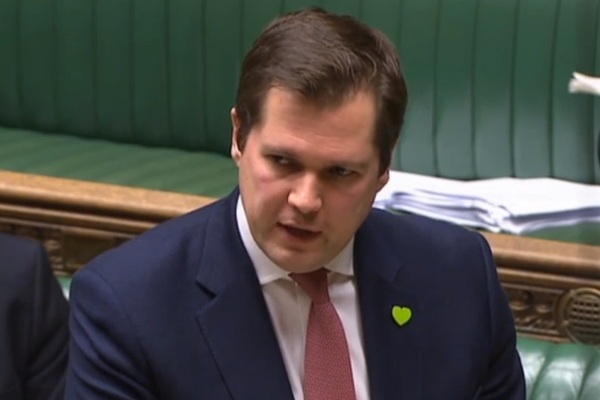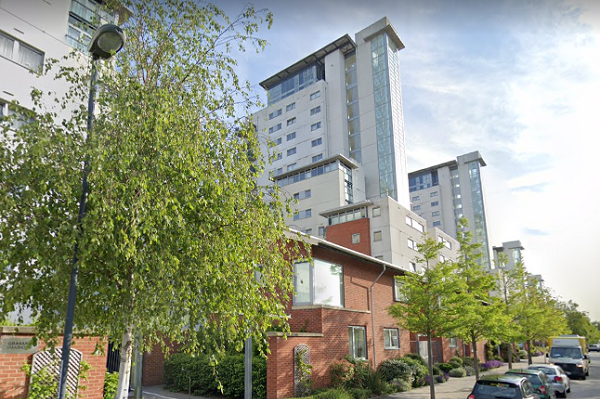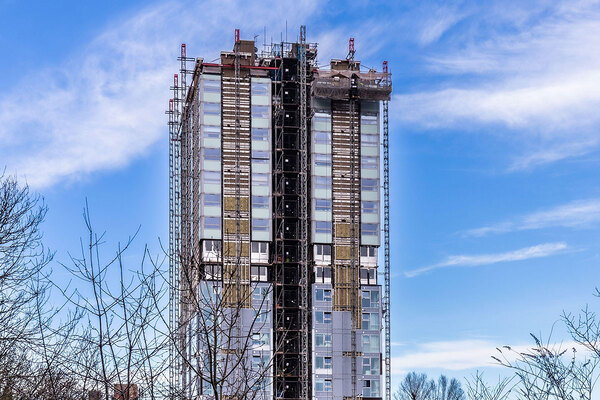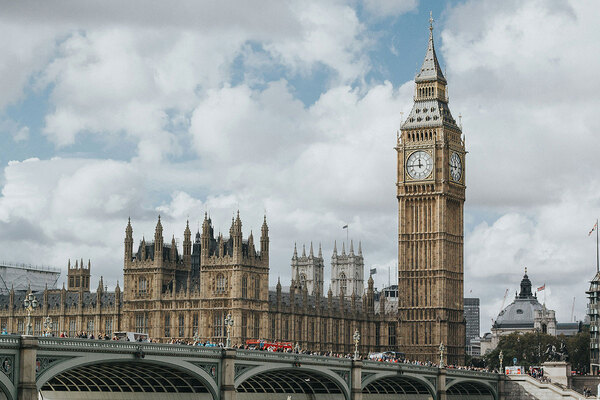You are viewing 1 of your 1 free articles
Jenrick poised to unveil further cladding crisis funding
Robert Jenrick is set to present plans to parliament today for further funding to strip dangerous cladding from the walls of high-rise buildings.

It is understood the housing secretary will address the House of Commons after Prime Minister’s Questions this afternoon, shortly before 1pm.
He is widely reported to be poised to announce £5bn of funding to remove cladding from high-rise towers – although this figure has not yet been confirmed officially. It is also not yet clear whether this would be a new £5bn or a £3.4bn top-up to the existing commitments of £1.6bn.
Inside Housing understands the funding would be designed to cover the removal of dangerous cladding from all affected blocks taller than 18m.
However, leaseholder campaign groups have expressed anger at the apparent exclusion of buildings below this height and works which go beyond the removal of dangerous cladding.
These works can represent huge bills for residents: leaseholders at one block in Manchester are facing costs in excess of £100,000 each despite having fully compliant cladding.
On Twitter, leaseholders from the End Our Cladding Scandal campaign, which Inside Housing helped found, said the exclusions would be “unacceptable” if confirmed. “Leaseholders did NOT cause this crisis, we should NOT be made to pay,” the group tweeted.
The plans come as the government faces rising backbench pressure to act on the crisis that has pulled in thousands of buildings and hundreds of thousands of leaseholders around the country.
A Labour Party motion passed through the house unopposed last week and more than 35 Conservative MPs have signed an amendment to the forthcoming Fire Safety Bill which would protect leaseholders from costs.
The announcement, if confirmed, would mark a remarkable two-year turnaround from the position in April 2019, when Inside Housing helped launch the End Our Cladding Scandal campaign and the government was refusing to provide any funding for private blocks whatsoever.
Within weeks of the launch of the campaign, the government provided £200m for buildings with aluminium composite material (ACM) cladding and in March last year it added a further £1bn for non-ACM cladding.
The campaign was relaunched in September with a new 10-step plan for ending the cladding crisis.
In recent months, with several national newspapers joining the campaign, the government has been under immense pressure to act.
A plan, developed by advisor Michael Wade, for forcing loan repayments on leaseholders by offering loans to freeholders was described by campaigners as a “cladding tax”.
10 steps to End Our Cladding Scandal
Based on the recommendations of the Housing, Communities and Local Government Select Committee and backed by a range of sector bodies and MPs from across the political spectrum, these are Inside Housing’s 10 steps to End Our Cladding Scandal:
- The government must lead an urgent national effort to remove all dangerous cladding from buildings by June 2022.
- The Building Safety Fund must cover all buildings, regardless of height, and a range of internal and external fire safety defects, not just cladding.
- The government should provide the money up front and then seek to recover it from any responsible parties or via a temporary levy on development.
- Social housing providers must have full and equal access to the fund.
- The government must compel building owners or managers to be honest with residents about fire safety defects.
- The government should cover the cost of interim safety measures.
- The government should act as an insurer of last resort and underwrite insurance where premiums have soared.
- A fairer, faster process is needed to replace the EWS form and funding is necessary to ensure all buildings requiring a form are surveyed within 12 months.
- Mental health support must be offered to affected residents.
- Protecting residents from historic and future costs must be a key commitment of new building safety legislation.
Sign up for our fire safety newsletter
Already have an account? Click here to manage your newsletters











